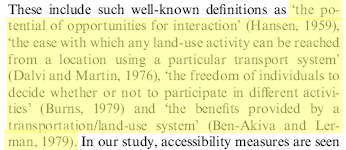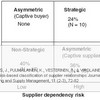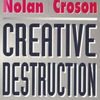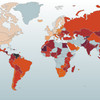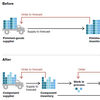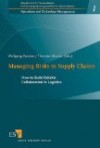 …spoils the barrel? Yesterday I sat down to prepare a review of this book, Managing Risks in Supply Chains: How to Build Reliable Collaboration in Logistics
…spoils the barrel? Yesterday I sat down to prepare a review of this book, Managing Risks in Supply Chains: How to Build Reliable Collaboration in Logistics, edited by Wolfgang Kersten and Thorsten Blecker. The book is a collection of articles by various researchers from mostly Germany and Austria, and while many of the articles/chapters maintain an excellent academic standard, one of the chapters does not at all hold up to any standard. In fact, it is so bad it makes me wonder how this could have slipped by editorial control?
Sloppy editor?
If Friday postings are meant to be more casual postings and personal rants, this post most certainly falls into that category. Now, should an editor care about the contributions in his book? I believe he should. The editor of this book doesn’t, I simply cannot avoid saying it, and I will explain why. While browsing through the book, this one article caught my attention because it only had six references. Now, for a book chapter that is rather unusual, and on further inspection I realized that the chapter indeed mentioned seven more references, but none of them appeared in the references. One or two forgivable perhaps, but seven? Did editor/reviewer not notice?
Improper referencing
Furthermore, the reference format was odd, see example below, unless this is a formatting standard I haven’t come across yet. Last name, year and number? And it’s not even consistent.
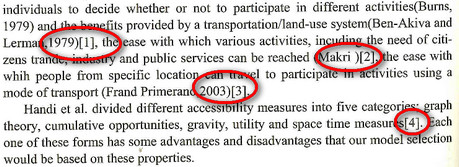
Book chapter, compare with conference paper below
Admittedly, the numbers attached to some of the references do match the order in which the references appear in the References list, but it is a strange formatting that I have not seen before. The odd formatting also indicates that the chapter perhaps was a re-write of a journal article or conference paper with a different formatting. Nothing wrong with re-writing, and I’ve seen plenty of researchers who have done nothing but re-publishing and re-presenting the same research time and again, but one should at least pay attention to the formatting, and make sure that all mentioned references are listed. After some digging, I did find a conference article by the same authors, where section 2 in this chapter here (where the above image is taken from) is a verbatim copy of section 2 in the conference paper I found (see image below). Oddly enough, the timeline suggests that the conference paper was presented after the book chapter was published (Conference: 2007, Book: 2006), by which there would have been ample time to correct the mistakes. Unless, and that is a possibility, the book chapter stems from an even earlier conference paper that I haven’t found yet.
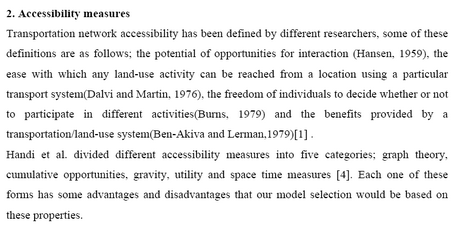 Conference paper, compare with book chapter above
Conference paper, compare with book chapter above
The reference list is also interesting, when comparing the book chapter with the conference paper:
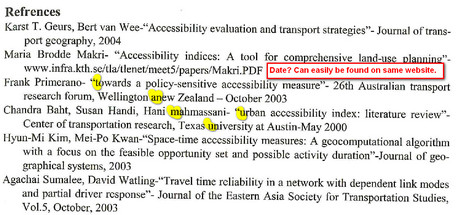 Reference list in book chapter
Reference list in book chapter
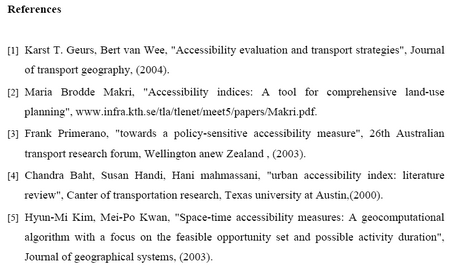 Reference list in conference paper, note the same spelling mistakes
Reference list in conference paper, note the same spelling mistakes
And the first reference listed doesn’t seem to appear anywhere in the chapter/paper, or so it seems, as I discovered later. Upon further investigation I found that the “[1]” in the figure above marks the end of a paragraph lifted word-by word from the first reference, so the “[1]” does make sense:
Original text in reference “[1]”, compare with chapter text in first image
While digging into the references for said chapter I also found that another 70-word paragraph had been copied word-by-word from one of other the references without that part being referenced or marked as a verbatim citation either!
Spelling and grammar
This same chapter also boosts some highly noticeable spelling errors that should have been detected by the reviewer, see examples below. I assume that “percent” is supposed to be “present” and “tack” is supposed to be “take”. The phrase “tack into account” even appears several times throughout the chapter. Were the chapters just submitted and not reviewed at all?
 Spelling mistakes
Spelling mistakes
Just one glitch?
After seeing this chapter pass editorial quality control, I began to question the other chapters in the book. However, I did not find anything anywhere near this glitch. In fact, all the other chapters adhered to what I would call high academic standards. Except for one thing: None of the chapters in the book seem to adhere to the same referencing standard. Another miss by the editor, or was that just not important for this book?
Will I do better?
I can’t help but think about the editor of my own book chapter in Managing Risk In Virtual Enterprise Networks, Stavros Ponis from the National Technical University of Athens, Greece, and who is a non-native English speaker like me, but still managed to point out spelling and grammar errors in my chapter that I had missed and even suggested better wordings and more typical English idioms before finally accepting my chapter submission. In some parts he also questioned my words, asking whether these were my own words or a citation. That is really what an editor should do, and that’s how I intend to do it, should I ever be offered the chance to be a book editor.
Peer review
On occasion I do peer review for journals, and I have to admit that I feel a bit guilty now, after bashing the editorial skills of two of my peers in supply chain risk research, and if you Thorsten or Wolfgang happen to read this, I hope you will forgive me. Overall, this is an excellent book, and over this coming weekend I will do a full content review of Managing Risks in Supply Chains, to make up for today’s harsh critique.
Reference
Kersten, W., Blecker, T. (Eds.) (2006) Managing Risks in Supply Chains: How to Build Reliable Collaboration in Logistics. Berlin: Erich Schmidt Verlag.
Author link
- tu-harburg.de: Thorsten Blecker
- tu-harburg.de: Wolfgang Kersten
Publisher link
- esv.info: Managing Risks in Supply Chains
amazon
- Buy this book at amazon: Managing Risks in Supply Chains
Related
- husdal.com: The art of reviewing journal submissions
- husdal.com: The Catch 22 of Academic Publishing
- husdal.com: Book Review: Managing Risks in Supply Chains

